Errol le Cain's artwork has always seemed to me as though it should have come from an earlier time. His detailed drawings have so many influences ranging from Art Nouveau, Art Deco, Oriental themes and Asian puppet theatres. His books would have benefitted from being published in the early part of the 20th century during the Golden Age of the Illustrated Gift Book, where the vibrant drawings could sit on hand made paper and nestle underneath printed tissue guards.
We have long been admirers of Le Cain's work and our stock regularly features his books and drawings. Below we have reporduced articles by those who knew and worked with him, we hope you will enjoy learning about this talented artist and animator.
Born in Singapore while the second world war raged, Errol was evacuated to Agra, near Dehli, in 1942 where he lived in a hotel with his mother and grandmother. "We spent most of our time on a large veranda looking out over a dense and beautiful garden." Errol recalled long days spent on the veranda listening to stories in English told by his grandmother while she sewed handmade dolls. In this painting he recaptures those memories " we are in our usual places on the veranda ... the mice that were always allowed to keep us company; the lizards who lived on the ceiling ... and me copying Tenniel's drawings from Alice in Wonderland. It was the only English book we had in the hotel and it was from it that I really learned to speak English." It was Christmas time and the garlands of paper chains were made out of old newspapers.
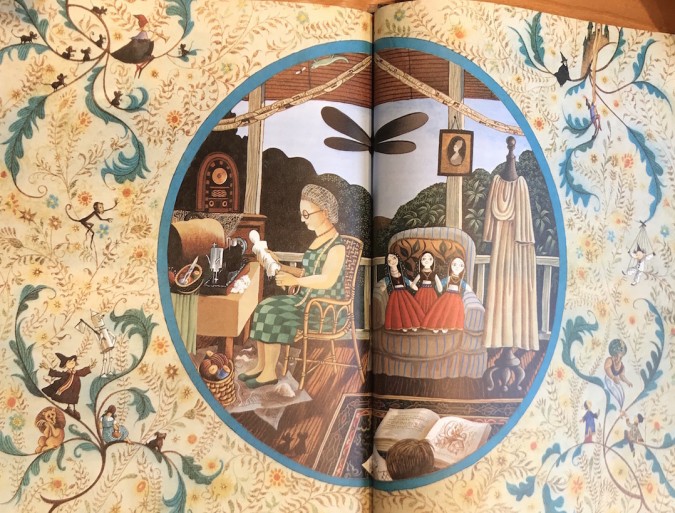
Recollections of Errol from Phyllis Hunt, his editor at Faber for 20 years.
I first met Errol Le Cain in 1967. A literary agent had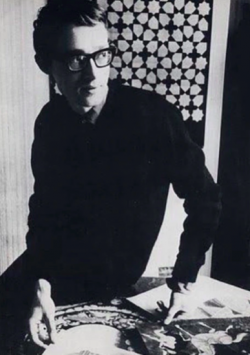 brought me a typescript and a sheaf of illustrations for a story about King Arthur; he had received them from a friend of the artist, who was said to be too shy to approach a publisher except at third hand. Once our enthusiasm for his pictures had been reported to him this terror must have abated, for I next remember visiting him at the Richard Williams Studios. He was indeed very shy but also very forthcoming, and this combination of diffidence with a readiness to meet everyone more than half-way was always characteristic of him. It was a most endearing quality.
brought me a typescript and a sheaf of illustrations for a story about King Arthur; he had received them from a friend of the artist, who was said to be too shy to approach a publisher except at third hand. Once our enthusiasm for his pictures had been reported to him this terror must have abated, for I next remember visiting him at the Richard Williams Studios. He was indeed very shy but also very forthcoming, and this combination of diffidence with a readiness to meet everyone more than half-way was always characteristic of him. It was a most endearing quality.
It must have been soon after this that I asked him to dinner, to meet two Faber authors. Unluckily it was a wet night, and Errol (who never learned to drive) arrived drenched, his usual slightly forlorn air exaggerated to caricature by the rain dripping from him in all directions. My other guests were kindly people, but I could see they were wondering where I had picked up this curious waif and stray, until he produced proofs of his illustrations for The Ancient Mariner, and converted them instantly into devotees. These pictures were done for a de luxe edition and printed on paper said to be made from seaweed. (The firm that published it was short-lived, perhaps not surprisingly.) Errol's work was very striking, but I wish he could have illustrated the poem again after his style had matured, especially as he told me he would have liked to attempt an entirely different interpretation after reading Empson's fascinating if perverse defence of the Mariner. This was only one of many projects outside the children's book field that we discussed half seriously: A Midsummer Night's Dream, Omar Khayyam, Archy and Mehitabel. For children's books, of course, the possibilities were endless. There was never time for a fraction of what he wanted to do.
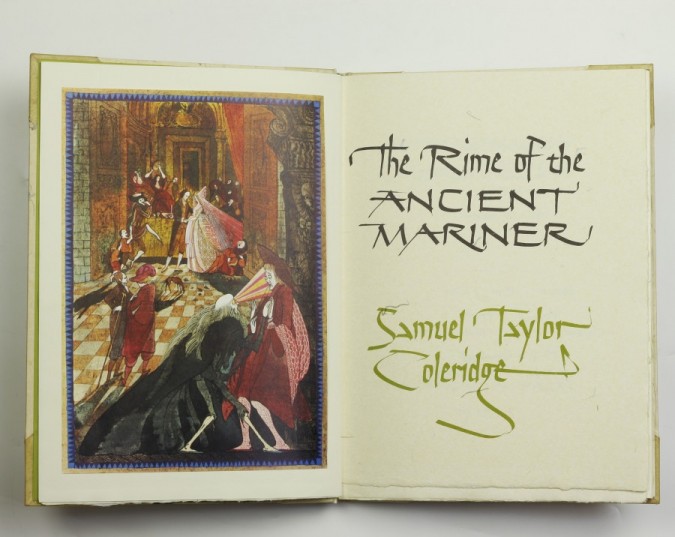
The Elaborately produced Ancient Mariner
He was fascinated by myths and legends of all times and places, and there was a certain strangeness in his art that made him the perfect illustrator for fairy tales. It's impossible to forget scenes like the desolate castle in Thorn Rose or the silver and golden forests in The Twelve Dancing Princesses. Among the books of this kind Cinderella was his favourite, partly because he considered it the archetypal fairy story and partly, I think, because it included a brilliant use of techniques suggesting animation: the mouse develops into a horse stage by stage and Cinderella passes from riches to rags as she runs wildly through the darkness.
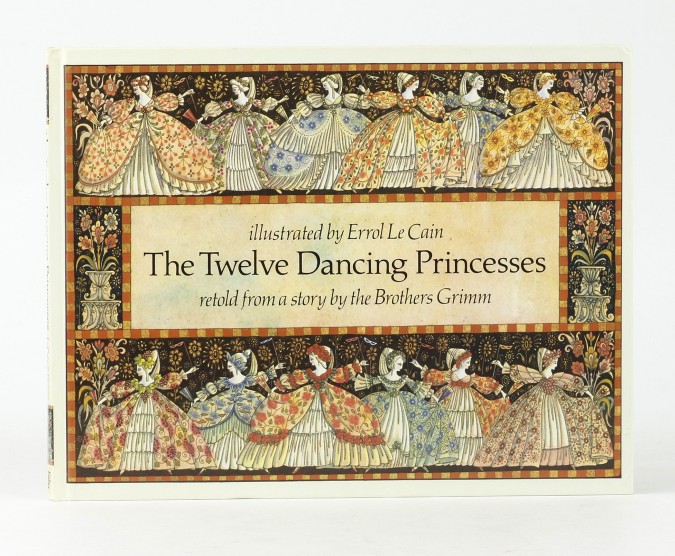
His first book, King Arthur's Sword, was entirely serious, but humour was already creeping into his second, The Cabbage Princess, where an absurd tale about a king whose ill temper leads to the transformation of his daughter into a cabbage is treated with baroque grandeur. There is something very characteristic in the charm with which Errol invested the mutated but still ravishing princess. He was never more inventive than in his most comic works, Mrs Fox's Wedding, Christmas 1993 and Growltiger's Last Stand, a dazzlingly witty treatment of three poems from T S Eliot's Practical Cats.
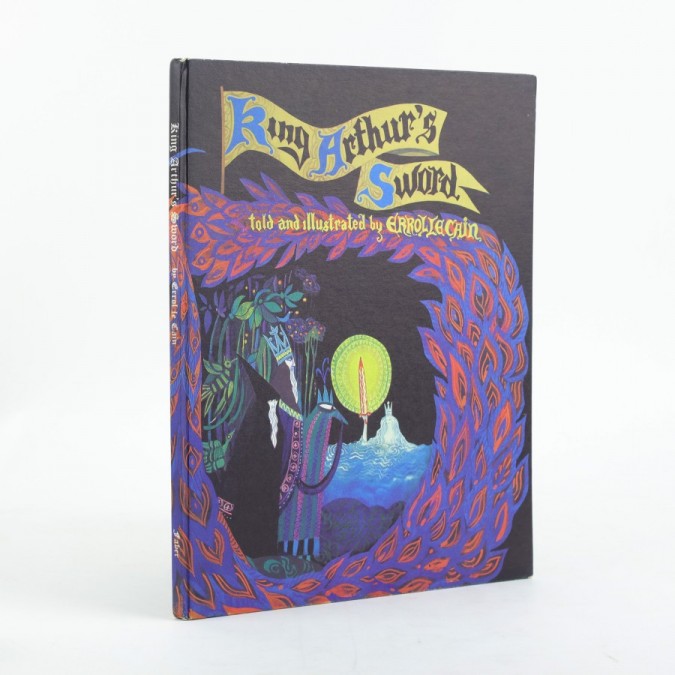
Le Cain's first book, King Arthur's Sword
After King Arthur's Sword a new picture book for Faber followed almost every year. But this was only a small part of his output; there were commissions for other firms, both British and American, and above all his regular work for the Richard Williams Studios. His film animation was as brilliant as his illustrations and in fact occupied most of his time; he regarded his books as holidays, and they were his nearest approach to a holiday, for he almost never stopped working.
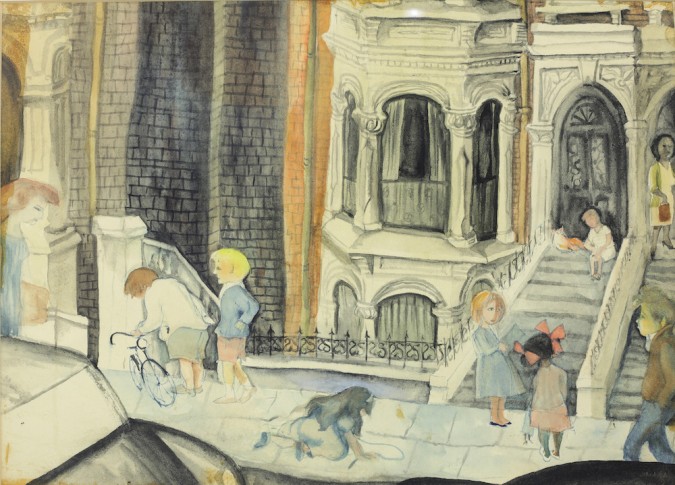
View from le Cain's Hampstead Home, from a watercolour by le Cain 1962 (private collection)
While he was still living in London I could occasionally tempt him out. I remember an expedition to Midhurst in search of family connections; his exotically mixed ancestry, mainly Malay and French-Canadian, unexpectedly include a Sussex streak. We couldn't find any trace of his relations, but it was a happy occasion; a day off was so rare for him that he enjoyed it like a child.
After he moved to Herne Bay and later to Bristol I inevitably saw less of him, though he always brought his artwork to the office in person and I would collect an audience to admire it. When I retired in the autumn of 1987 he came to my leaving party and seemed to be in excellent form. A few months later he fell ill and I never saw him again, though we talked on the phone. In our last conversation, not long before Christmas, he sounded entirely himself and was full of projects for the future. It is tragic that none of them can be realised.
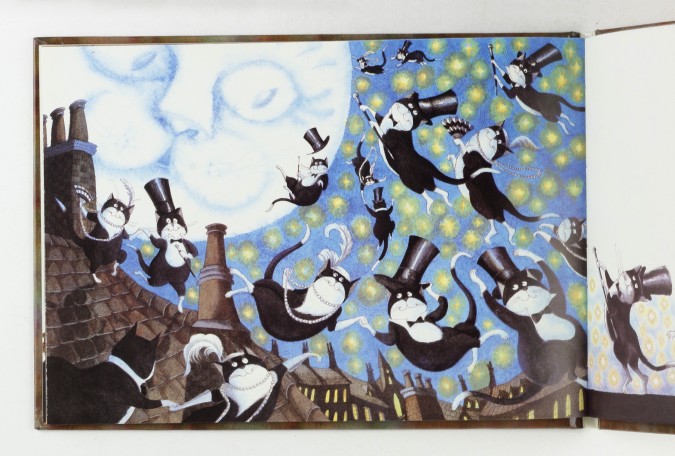
Errol Le Cain interviewed by Penny Sibson. (Books for Keeps Author Graph number 47, 1983)
If Errol Le Cain were asked what had most influenced him throughout his life, he would almost certainly reply ‘Hollywood’. Even his name is owed to that fantasy world of the film moguls: his mother’s favourite film star was Errol Flynn. (His surname comes from his French-Canadian great-grandfather, ‘a person of great mystery’, who came to Singapore and married a local girl distantly connected with the royal family of Tonga. ‘So I am of royal blood!’) Errol himself, slight and diffident, his essential gentleness laced with an acute and impish humour, could hardly present a greater contrast to his swashbuckling namesake; yet in the last 20 years he too has created worlds of fantasy, not only between the covers of books but on film.
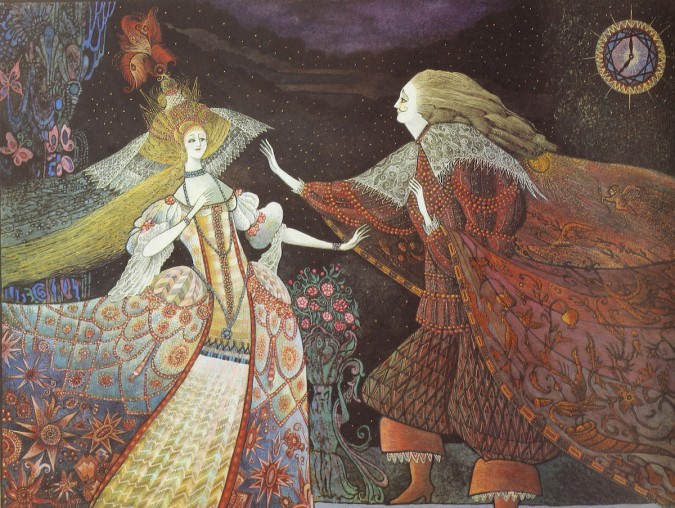
Born in Singapore in 1941, he was hastily evacuated to India when only a year old to escape the Japanese invasion so his earliest childhood memories are of Agra, the dust-storms, the hail-storms and the smells. And the Taj Mahal, which he passed every day – it was just ‘that old building on the way to school’. The highlights of his life were the annual visits of the puppet man, who set up his stage in the dusty courtyard and with his large-size puppets, ‘glittering and golden and magical’, performed plays about gods and goddesses from the Ramayana. ‘They invariably ended with a dust-storm starting. He seemed to be the magic man, who was blown in and out on a dust-storm.’ Errol spent much of his time with his grandmother, helping to make the Indian dolls she sold to the American soldiers. There were no books, and he vividly remembers being shown when he was about four ‘the first picture book I’d ever seen – it always remained in my head. The book was Alice in Wonderland, with Tenniel’s illustrations.
Back in Singapore after the war Errol found himself very much on his own. He was an only child, and with his Eurasian background but white appearance he was not fully accepted by the European or Asian communities. For company he again turned to his grandmother.
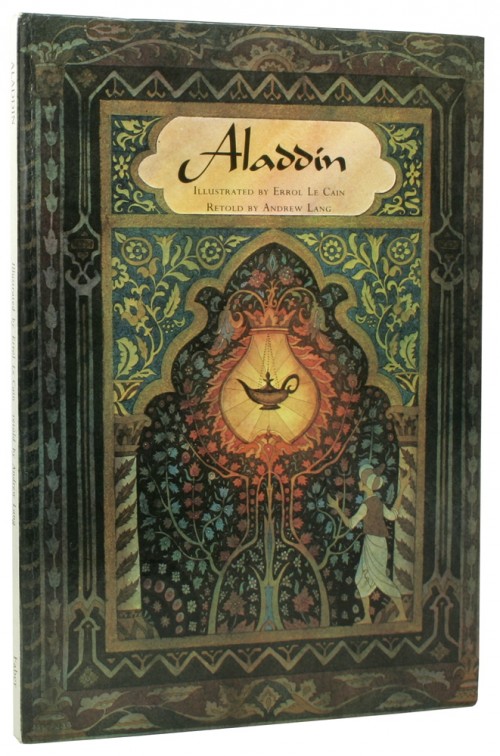
‘I remember her telling me the story of Aladdin, and I made a picture book of it. Someone gave me a copy of Hans Andersen which wasn’t illustrated, so wherever there was a space I’d draw a picture for it.’
Errol attended the local Catholic schools in Agra and Singapore but his formal art training was minimal. ‘I was banned from art classes at my kindergarten,’ he says cheerfully. ‘I ruined all my shiny coloured paper by cutting out my own shapes instead of the ones the teacher had drawn, and after that I wasn’t allowed to do any art. At school in Singapore ‘I found the art classes incredibly tedious. We were made to draw boring subjects in very hard pencil and the paintings I did were not what the teachers wanted. Art wasn’t considered a proper subject, more a thing you grew out of. As I was always drawing and painting at home it didn’t bother me much!’
At home, though Errol was an avid reader, there were still hardly any books, just comics. ‘Everything was visually geared. Classics Illustrated – and of course Mickey Mouse!’ But there was also the Roxy Cinema, conveniently next door. ‘The Roxy was really where I was educated. It used to change its programmes twice a week, and I knew how to get in behind the screen so I’d see the films back to front. I saw everything. Those films were my art training.
At the Roxy there were MGM Productions: next door there were GMG Productions. ‘I’d turn my room into a theatre. I had a repertory company of players and, like the Roxy, we changed programmes twice a week which meant new costumes. scenery and scripts. The stories were highly sophisticated versions of what I’d seen in the cinema – can you imagine Casablanca in ten minutes? I was totally obsessed and absorbed in this world and I wanted to be in films.
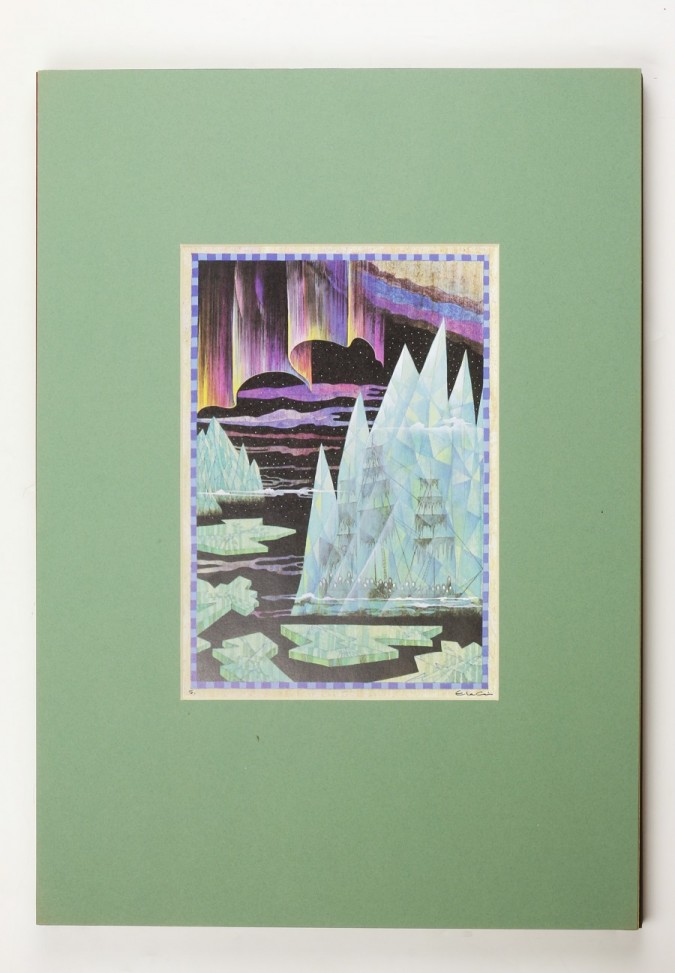
Illustration from The Rime of the Ancient Mariner
‘Then when I was 11 a friend of mine bought an 8mm camera and I branched out into animation. I did a scene of a cricket walking across a bridge carrying a knapsack on its back and to my amazement it worked. So I wrote a story called The Enchanted Mouse and made a ten-minute cartoon feature using cut-outs. Then my parents gave me a 16mm camera and some colour film, and I made The Littlest Goatherd.’
When Errol left school at 15 ‘no one knew what to do with me’, but then the local agents for Pearl & Dean Films saw his work and offered to pay his fare to England to train as an animator. And so Errol came to London, flung in at the deep end of the world of animation. After some years he was asked to join Richard Williams Studios, with which company he has worked ever since, doing everything that came to hand including the titles for such films as The Charge of the Light Brigade. He has also worked with BBC Television on productions like The Snow Queen and Leon Garfield’s The Ghost Downstairs.
Errol’s first picture book, King Arthur’s Sword, began life as the storyboard for a film that was never made, but the designs for it were shown to Faber and Errol was launched on his career as a picture book artist. ‘It had been something I’d always wanted to do, to Illustrate children’s books, but I’d never known how to set about It.’
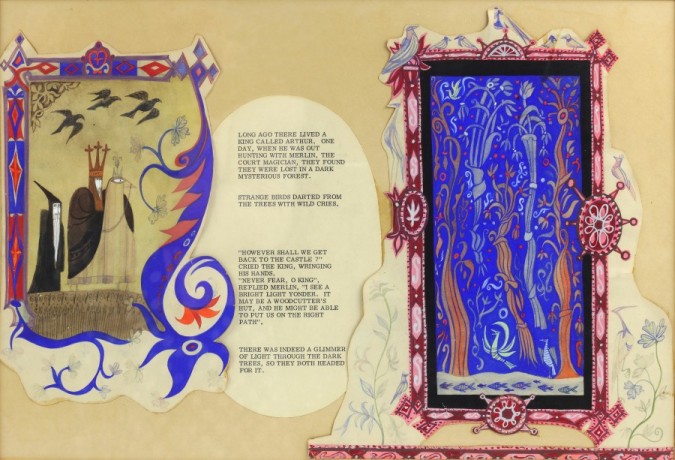
Original Paintings for King Arthur's Sword
Where Errol’s books are concerned ‘I’m a thieving magpie. This is because I work in the cinema and think theatrically rather than as an illustrator. People who work for films, set designers, tend to find the key to a story’s setting through looking at various paintings. There isn’t actually anything original around: the only original thing is you as the filter through which all your experiences pass. The Cabbage Princess, my first real book, happened to come out of a book I was looking at about the commedia dell’arte. That was the key, but I didn’t rigidly sit down and study it, It was just the inspiration. The spinning-wheel scene in Thorn Rose was actually inspired by Rembrandt, and yet when you look at it now it isn’t at all Rembrandt. And I always loved the way the grass is laid out in those ‘Lady and the Unicorn’ tapestries, spangled with flowers... But I don’t sit with the thing in front of me. copying it. I just remember what I’ve seen.
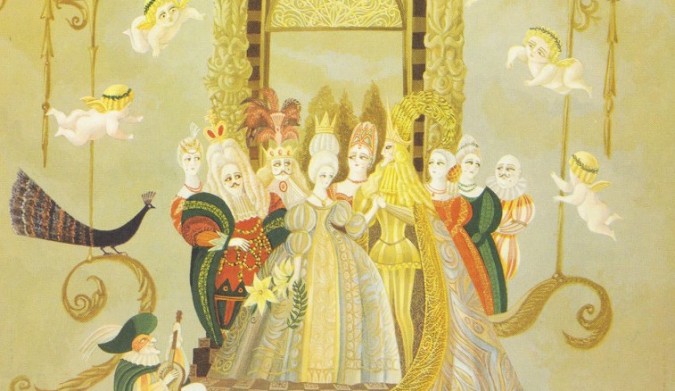
The Cabbage Princess, Le Cain's second book, 1969
‘I don’t go for an authentic period setting – as a magpie I see elements from various periods. The costumes in Cinderella span several centuries. I wanted to give Thorn Rose a medieval setting with the Prince a 100 years later Elizabethan.’ As for the gorgeously costumed Twelve Dancing Princesses, ‘this is where Hollywood was so helpful. I remembered a film I’d seen as a child, where everyone was dressed in Louis XVI costumes, white hair, moonlight on porcelain skin... I was very short-sighted, so I never saw Hollywood in sharp clarity, I used to see it through an impressionistic blur.’
Errol also draws on a strong sense of place. ‘When I see old buildings and streets I people them from the past. When I was in Paris I could pick any century, I had the feeling that I’d been there, I knew what it was like. And I had a sense of outrage – why am I behaving like a tourist when I really belong to this place because I know it so well? I try to get that feeling into my drawings.
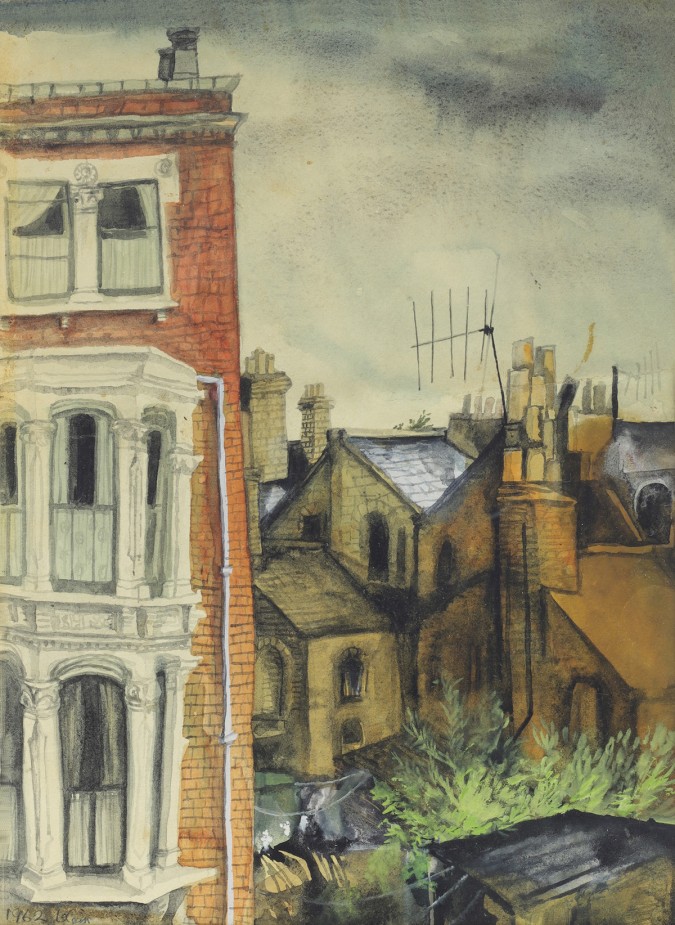
Hampstead, view form Le Cain's window, (private collection)
Of all his books Beauty and the Beast most demonstrates Errol’s sense of theatre, its pictures resembling stage-sets with only one close-up. ‘I always think in terms of film, working out different angles to Iead you dramatically through the book.’ But then Errol was having problems with traditional fairy tales – ‘I was running out of variations on the happy-ending scene. The Twelve Dancing Princesses had not one but twelve of them!’ So he welcomed the idea of illustrating Hiawatha’s Childhood, the picture book which at last won him the Kate Greenaway Medal to which he had three times been runner-up with earlier books. ‘I’d always loved the poem and had a feel for Canada, I suppose because of my great-grandfather.’ In this case he did a great deal of preliminary reading, discovering that although Longfellow had actually borrowed many of the ‘Indian’ traditions front Norse myths Hiawatha himself was a real historical character, a chief of the Ojibwe tribe by the shores of Lake Superior alias Gitche Gumee.
But Hiawatha had a deeper appeal for Errol, who shares the belief of the North American Indians that ‘man and his environment are one – they are in tune with nature and know the interdependence of the land and the human.’ Since 1975 Errol has been a Nichiren Shoshu Buddhist, following the essentially practical teachings of a thirteenth-century Japanese Buddha. After his strict Catholic upbringing Buddhism came as a revelation to him although ‘Buddhism is something which is latent in all of us. It’s really very practical and logical rather than mysterious and esoteric. Buddhism says that you have the means within yourself to change things. You draw the strength and the wisdom from within yourself through the chant: Nam-myoho-renge-kyo.’
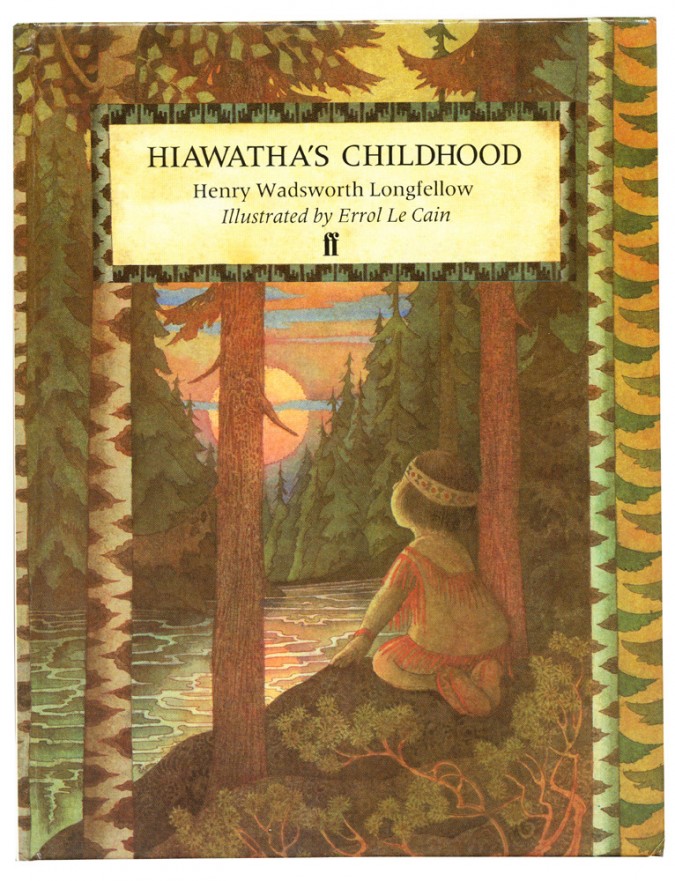
Hiawatha’s Childhood marked a turning-point in Errol’s career and since then his picture books have been very diverse. Growltiger’s Last Stand, based on some of T S Eliot’s Old Possum poems, celebrated with wicked humour Errol’s love of cats. Crisis at Crabtree, a story by his friend and fellow-Buddhist, the late Sally Miles, described the resistance of a group of historic houses to the building of a motorway. Errol accepted it as a challenge but ‘it was one of the most difficult books l’ve had to illustrate. They’re houses and they’re static. The problem was to give them character and movement without making them too Disneyish.’ The book was being published in association with the National Trust and the architecture had to be exactly right. (Errol’s grandfather, winner of Singapore’s Queen’s Scholarship in Architecture, would no doubt have approved.)
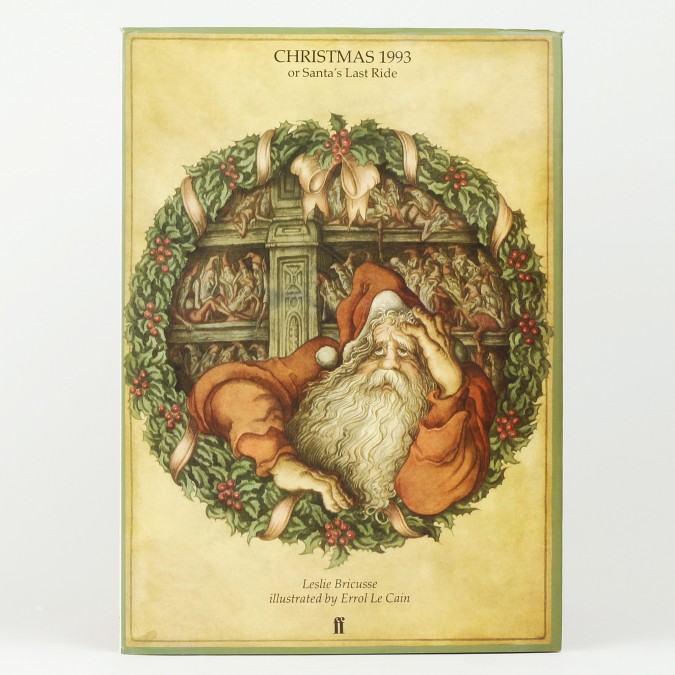
For Christmas 1987 Errol has produced two very different books. Christmas 1993, ominously subtitled Santa’s Last Ride, is based on verses by the lyricist Leslie Bricusse, in which an overworked and disillusioned Father Christmas laments the bureaucratic complexities of an unappreciative modern world. But with The Enchanter’s Daughter, written by Antonia Barber for her adopted Vietnamese daughter, Errol returns most happily to the East, giving the story a setting that exquisitely mingles Japanese, Chinese and Vietnamese.
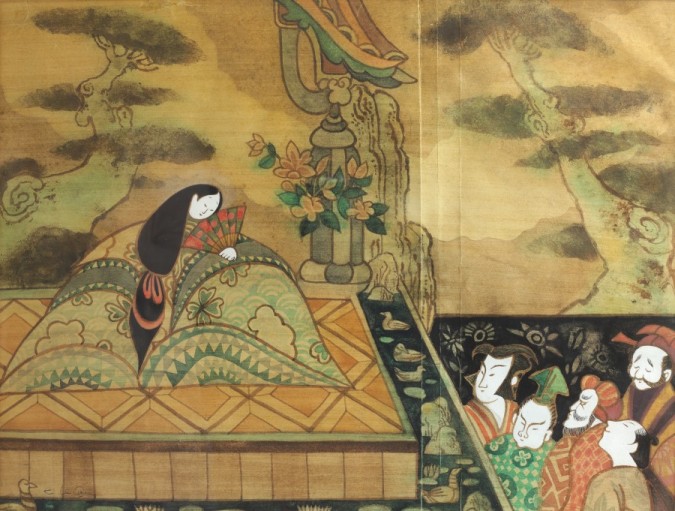
Original Illustration from The Child of the Bamboo Grove
And the future? It’s busy. For over 20 years Errol has been working with Dick Williams on a major animated feature film and now at last it’s taking shape. He also contemplates a daunting number of picture book ideas. ‘One of my dreams, when I was thinking in terms of film, was to do a series of legends from all over the world. In a way that’s coming about through the books – I’ve touched Russia. Japan, France, Thailand...’ He would like to do an Indian picture book drawing on his early memories: he has ideas for a Chinese fairy tale and some Buddhist tales. Meanwhile he is working on a retelling of The Pied Piper of Hamelin by Sara and Stephen Corrin. His studio is scattered with holiday brochures from the half-timbered towns of North Germany, and a painting of a group of burghers clad in rich shades of red, orange and russet glows from his desk. Pictures by Alfi, aged eight, and Frederika, aged three, are pinned on the wall. (‘Frederika loves painting. Alfi’s a film buff – he’s into James Bond, Dr Who, all the fantasies. But he doesn’t have the Roxy next door!’) Outside in the narrow street two lorry-drivers are having an argument, and a whiff of eastern spice drifts in through the window. Errol finds that the multi-ethnic Bristol suburb where he now lives reminds him very much of his early life in Singapore. ‘I feel at home.’
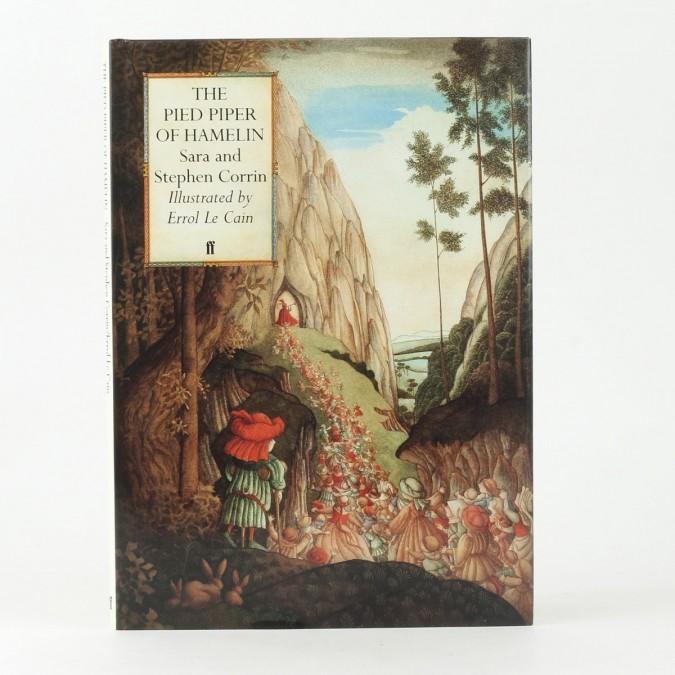
Browse books and artwork by Errol Le Cain
Recent Posts
- The Evolution of Crime
- Tour The Bookshop On Your Screen
- The Genesis of Mr. Toad: A Short Publication History of The Wind In The Willows
- Frank Hurley's 'South'
- The "Other" Florence Harrison
- Picturing Enid Blyton
- Advent Calendar of Illustration 2020
- Depicting Jeeves and Wooster
- Evelyn Waugh Reviews Nancy Mitford
- The Envelope Booklets of T.N. Foulis
- "To Die Like English Gentlemen"
- Kay Nielsen's Fantasy World
- A Brief Look at Woodcut Illustration
- The Wealth Of Nations by Adam Smith
- What Big Stories You Have: Brothers Grimm
- Shackleton's Antarctic Career
- Inspiring Errol Le Cain's Fantasy Artwork
- Charlie & The Great Glass Elevator
- Firsts London - An Audio Tour Of Our Booth
- Jessie M. King's Poetic Art, Books & Jewellery
Blog Archive
- January 2024 (1)
- January 2023 (1)
- August 2022 (1)
- January 2022 (1)
- February 2021 (1)
- January 2021 (1)
- December 2020 (1)
- August 2020 (1)
- July 2020 (2)
- March 2020 (3)
- February 2020 (2)
- October 2019 (2)
- July 2019 (2)
- May 2019 (1)
- April 2019 (1)
- March 2019 (2)
- February 2019 (1)
- December 2018 (1)
- November 2018 (1)
- October 2018 (2)